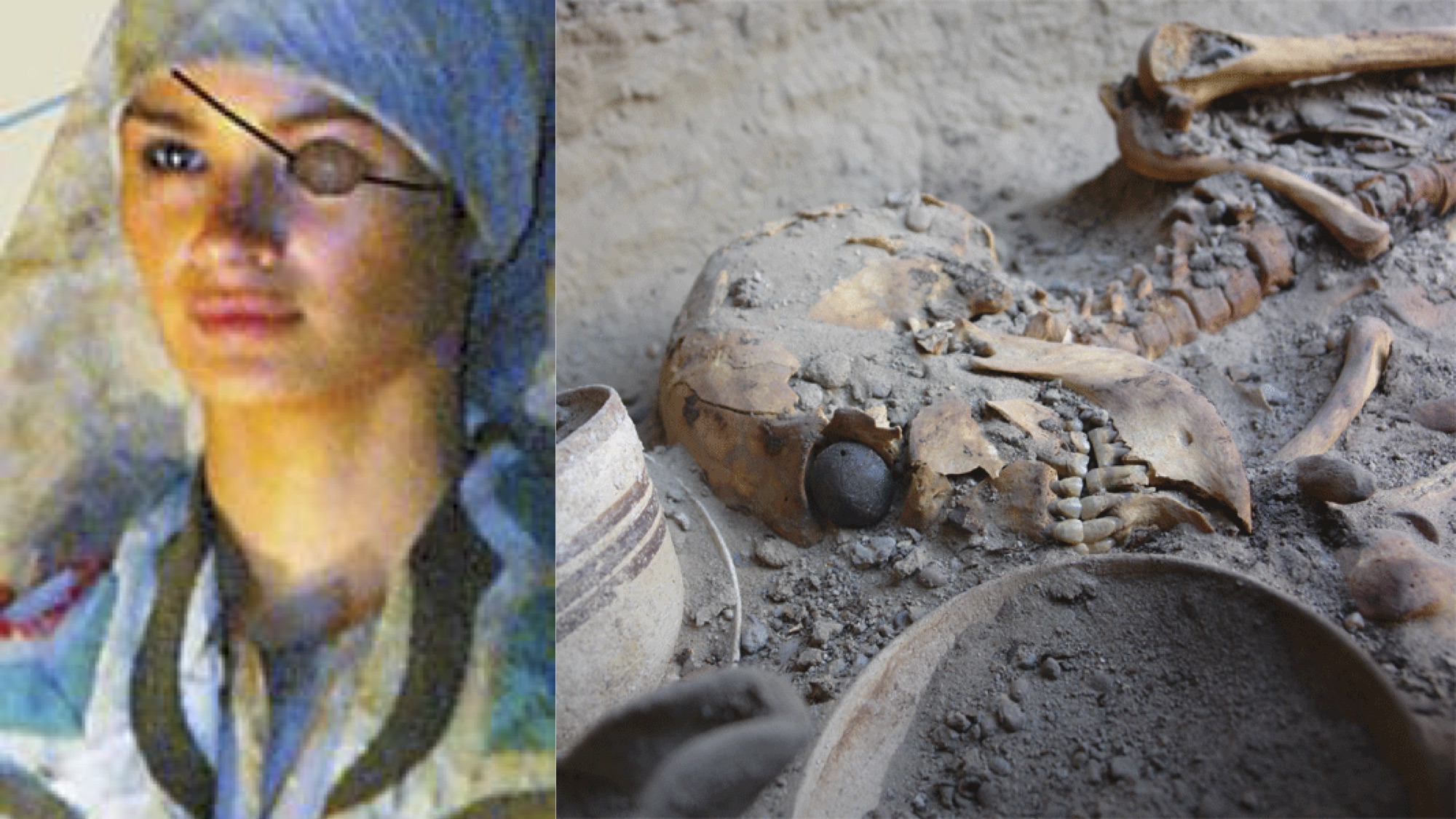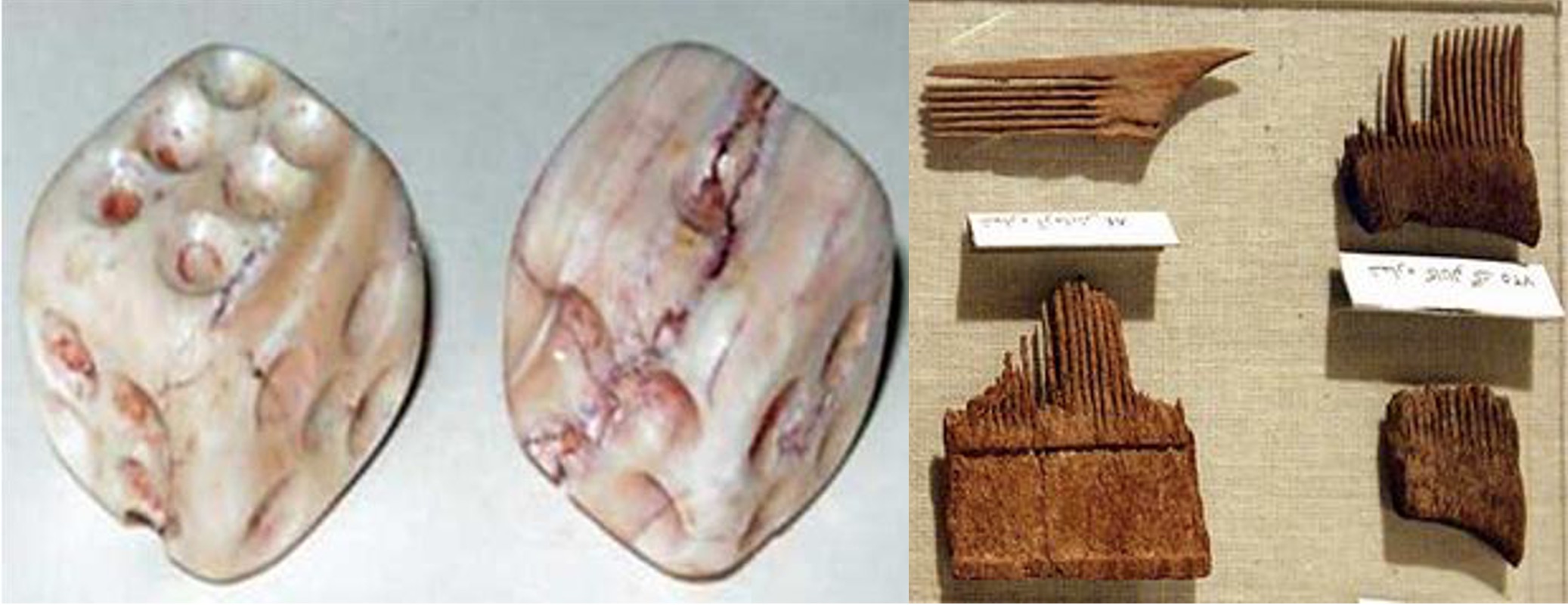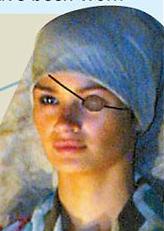The content of the La Repubblica report has been translated from Italian into English and also edited in the below version. Kindly note that excepting one video, all other videos and images (along with their accompanying captions) do not appear in the original La Repubblica report.
For more on the topic of Shahr-e Sookhteh (Burnt City) and ancient Iran from the Upper Paleolithic to Pre-Achaemenid eras click here …
= = = = = = = = = = = = = = = = = = = = = = = = = = = = = = = = = = = = = = = = = = = = =
The “Pompeii of the East” in Iran is known as the ancient city of Shahr-e Sookhteh (Burnt City). This was submerged by the sands of Lut desert in approximately 2,300 BCE. Just like the Roman city of Pompei, of Shahr-e Sookhteh (Burnt City) has also remained intact over the ages.

[LEFT] Reconstruction of 5000 year-old woman found at the Shahr-e Sookhteh (Burnt City). Her face was reconstructed with the latest technology available to anthropologists, paleontologists and forensic experts. She is believed to have been of the ancient city’s upper crust and served as a priestess during her lifetime. The lady is also notable due to the artificial eye that was discovered, still lodged in the eye socket of her skull after thousands of years; [RIGHT] Skeleton of the young woman from Shahr-e Sookhteh (Burnt City). Note artificial eye in the eye-socket of the skull. For more on this topic see “Reconstruction of the face of a 5000 year old woman in Iran” …
The site was excavated in the Iranian province of Sistan-va-Baluchistan by an international team of archaeologists. This particular project was originally initiated in 2016 by the University of Salento’s Department of Cultural Heritage. The La Repubblica report however does not state that the site has already been excavated earlier by Iranian archaeologists – see for example the 2005 report “Ancient Ruler discovered in Burnt City”.
According to current scholarship, the collapse of this ancient city occurred over a number of decades. The primary reason and for the disappearance of the “Pompeii of the East” is believed to have been due to sudden climate changes.

[LEFT] Ancient dices discovered at the Shahr-e Sookhteh (Burnt City); At present experts are (a) attempting to determine why the game was played with sixty pieces and (b) working to decode the rules of the game. Iranians call Backgammon “Takht-e Nard” [RIGHT] A display of the thousands year old rulers (or pieces of the same ruler) discovered at Shahr-e Sookhteh (Burnt City). The device made of ebony wood, has a precise system of measurement whose units correspond to 1.5 millimeters (Courtesy CHN & Payvand News). For more on these topics see “Burnt City: World’s Oldest backgammon Game” and “Ancient Ruler discovered in Burnt City” …
Now registered with UNESCO for its “universal value”, Shahr-e Sookhteh (Burnt City) was a thriving commercial and agricultural center and the crossroads of four great river civilizations: the Oxus, Indus, Tigris-Euphrates and Halil rivers.
Animation sequence of the 5000 year old Goblet of Shahr-e Sookhteh (Burnt City) (Source: YouTube).
The excavations from the “Pompeii of the East”, have revealed much information regarding the customs and habits of the inhabitants of the city, notably the discovery of hundreds of ‘proto-tablets’, with numerical annotations. These testify to a highly sophisticated social and administrative organization, while the tall buildings demonstrate the foundations of a complex and developed urbanization process.




